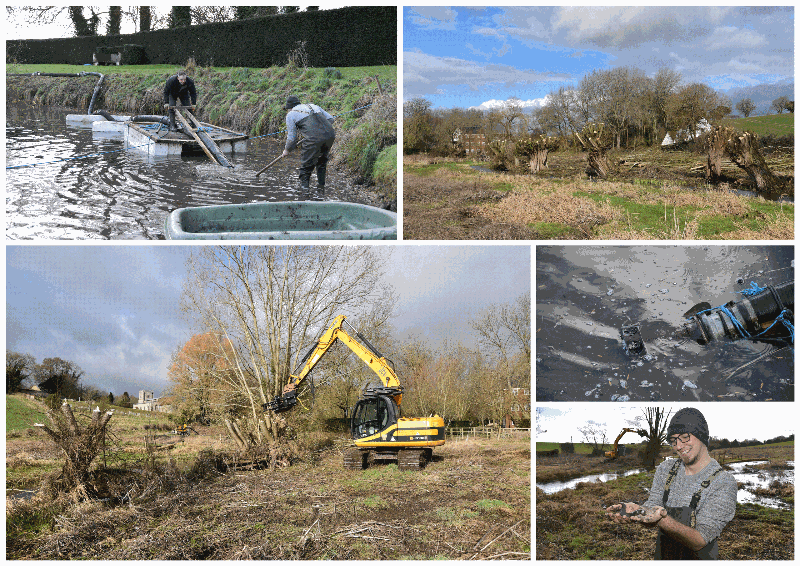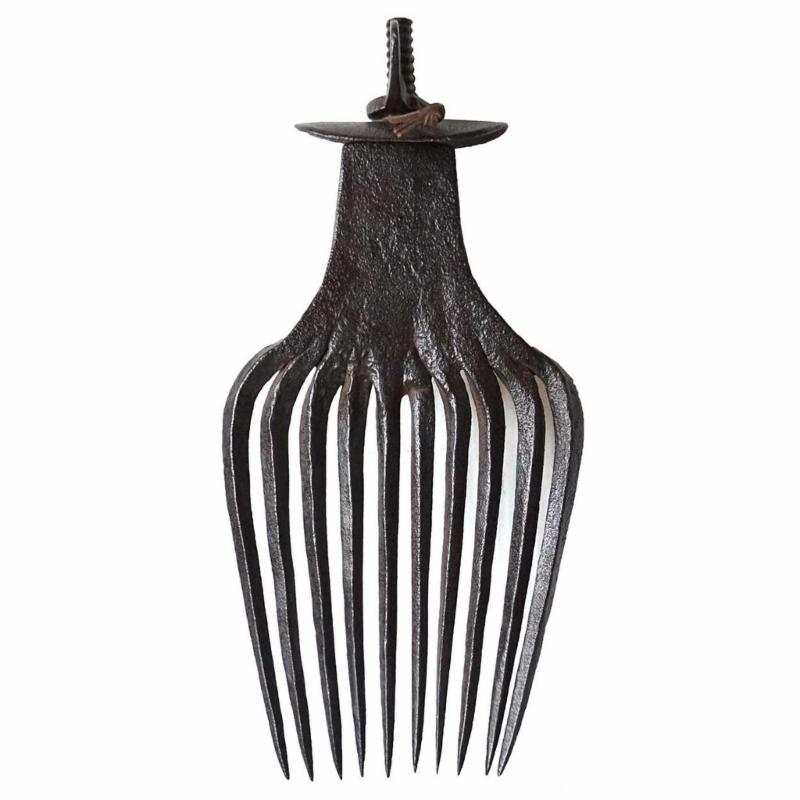Renée Wilson
I am sorry to bring the sad news that Renée Wilson, widow of Dermot Wilson, died last month aged 88 years.
 | |
| Renee with Fergus at the unveiling of the plaque in July 2018 |
And Renée did indeed have a sharp eye for detail and words. She was in her own right a talented copywriter, having met Dermot when they were both working for the advertising colossus J. Walter Thompson. I saw that first hand when we were writing the text for Dermot's blue plaque - summarising the life of a great man in a handful of words is harder than you might suppose.
I am proud to have known Renée. She was always incredibly supportive but it makes me sad that the final chapter of their story is now closed. She is survived by their only child, Fergus.
Pruning and pumping
The quiet of Wallop Brook has been somewhat disturbed of late; a giant tracked tree cutter and the diesel throb of a massive pump have been the sounds of the week.
Nobody is entirely sure how old the willows that grow along the Brook are. There are plenty of sepia photos dating back to the 19th century that show them. It is said the tree limbs provided the blanks from which the bats of cricketer W G Grace were crafted 130 years ago. But their long life, evidenced by the thick girth of the trunk, is entirely due to the care of man for Salix fragilis has a particular way of living its life.

We tend to call these trees by their more common name of crack willows, so named for the whiplash report when one of the tall branches snaps off and falls to the ground. Left to its own devices all the branches would eventually snap off in similar fashion, clearing the ground around the trunk of competing vegetation from the centre of which a new tree would grow to repeat the whole process every 7-15 years. However, regular pollarding to harvest the wood for all manner of uses changes the nature of how the tree grows.
Today there is not the same demand for willow but to prevent the trees reverting to type we continue by cutting the crown every decade. In the past it was done with ladders and chainsaws a process that would take two men two weeks. But the giant nippers on the end of a hydraulic arm completed the task in less than a day, piling the branches up in neat stacks which, once they have dried, will be chipped for use in the bio-mass boiler of the neighbouring farm.
The purpose of the pump on the other hand is a slightly less illustrious. We have here at The Mill what is known as an 'in-line' lake. That is to say the diverted brook flows in at one end and out the other. In many respects that is wonderful - constantly replenished chalkstream water that keeps a clear, cool lake that the fish love regardless of the season or prevailing weather. However, all rivers, even chalkstreams carry silt, which falls to the bed of the lake as the water passes through. Over a period of many years sections of our lake that began life with a depth of five foot have reduced to one. However, the pump with its six inch pipe and sucking head, which is kinder and more efficient than dredging, has removed the decades of build-up.
Today we are back to some sort of normality; you can actually hear the burble of the brook. The willows look a little shorn but come the spring green shoots will sprout. As for the lake, the trout who found much to like in the swirling disturbance of the pump, are rooting around in the newly exposed gravel bottom.
A fifty inch brown trout
As regular readers of this Newsletter will know I am not a great one for featuring pictures of trophy fish captures but occasionally one comes along that simply cannot be ignored.
I think you will agree that this Mongolian brown trout, at fifty inches, is worth gawping at. As you ponder it is worth remembering that this is no Mongol native - the original brown trout were stock fish from Europe, possibly even from the UK.

If you'd like to watch the video about fishing in Mongolia click here
New on the River Test
It is not often you have the opportunity to take up the offer of one of the most iconic beats on the River Test but I'm delighted to say it has come my way.

Broadlands House is a famous stately home, the residence of the Mountbatten family where the lawn slopes down to the river. It is no bad view to have and it is where Prince Charles and Lady Diana spent their honeymoon night and the first three days of married life. They were following in the footsteps of his parents who did something similar when the then Princess Elizabeth married Prince Philip in 1947.
The Tanyard and House beats are perfect for a small group with plenty of river to spread over, open banks and extensive sections which are ideal for wading. There will be a new fishing hut in time for the start of the season but The Cromwell Arms is just 100 yards walk. It offers breakfast, lunch and dinner, plus has comfortable bedrooms. Alternatively The Three Tuns (150 yards) is the welcoming pub the locals head to.
The fishing is reserved for the exclusive use of parties of four. The daily rate includes both beats and a fishing guide who will provide tackle, flies and assistance as required. More details and dates here.
 | |
| St. Valentine |
The Quiz
More questions to hopefully entertain and enlighten. As ever it is just for fun with the answers at the bottom of the Newsletter.
1) Which notoriously brutal leader founded the Mongol Empire in the 13th century?
2) Which trees are also known as sallows and osiers?
3) What was the nationality of Saint Valentine?
Have a good weekend.
Best wishes,

Simon Cooper simon@fishingbreaks.co.uk
Founder & Managing Director
Answers:
1) Genghis Khan
2) Willows
3) Roman



